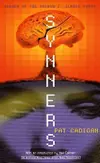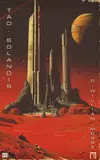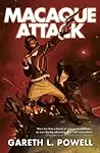
Kim Miller

I did not relate well to this at all. I mostly read a book in a few days, this one took three weeks as the prose was so unattractive that I'd read for a bit and put it down until tomorrow or the next day. It was very unmotivating.
The first half is a non-stop series of jump cuts as characters are introduced, and as we try to come to grips with understanding one it jumps to the next. The story revolves around the various attempts to hack into the mind/thinking of people and to share their minds in a cyberpunk network world of increasing fantasy. One of the characters makes advertising pieces just by thinking of them and uploading those images into the network. Another is a business executive who is trying to take over the network of financial gain, and hoodwinks the advertising guy into becoming part of the plan. Others are friends or associates of these two.
A major part of the story is the development of 'sockets' whereby probes are set into a person's brain and wires plugged into them for easier connection into the network. This is fraught with problems.
The language tries to reflect a punkish patois but these people are middle aged, not the teen or twenty somethings of a world where language is fluid and on a downhill trajectory.
The story doesn't do a great deal until the 70% mark when there is a disaster. One socketed man has become a human virus in the network and everywhere the viral damage spreads and causes chaos. The remainder of the book is made up of the other characters trying to stop him and limit the damage. It tends to fizzle out at the end.
I did not relate well to this at all. I mostly read a book in a few days, this one took three weeks as the prose was so unattractive that I'd read for a bit and put it down until tomorrow or the next day. It was very unmotivating.
The first half is a non-stop series of jump cuts as characters are introduced, and as we try to come to grips with understanding one it jumps to the next. The story revolves around the various attempts to hack into the mind/thinking of people and to share their minds in a cyberpunk network world of increasing fantasy. One of the characters makes advertising pieces just by thinking of them and uploading those images into the network. Another is a business executive who is trying to take over the network of financial gain, and hoodwinks the advertising guy into becoming part of the plan. Others are friends or associates of these two.
A major part of the story is the development of 'sockets' whereby probes are set into a person's brain and wires plugged into them for easier connection into the network. This is fraught with problems.
The language tries to reflect a punkish patois but these people are middle aged, not the teen or twenty somethings of a world where language is fluid and on a downhill trajectory.
The story doesn't do a great deal until the 70% mark when there is a disaster. One socketed man has become a human virus in the network and everywhere the viral damage spreads and causes chaos. The remainder of the book is made up of the other characters trying to stop him and limit the damage. It tends to fizzle out at the end.

Added to listOwnedwith 5 books.

A rollicking end to the Ack-Ack Macaque trilogy. Everyone's favourite cigar smoking gun toting brain enhanced foul mouthed monkey with attitude saves the world ... for the third time.
#1 saw him save the world from a nuclear holocaust. #2 saw him save the world from an attack of a hive mind cult called The Gestalt. And in #3 he saves the world from the attack of the evil mastermind behind the previous threats who wants another attempt at global destruction. No assimilated hive mind this time, just cyborgs where the brains of humans have been removed and put into metal robots. We've moved from Star Trek's Borg to Dr.Who's Cybermen.
And through it all, the brain enhancements, the hive mind cloning, the cyborgs, Powell weaves a story that takes the idea of 'life and existence is just a simulation' and shakes it out of its packaging and spills the pieces all over the floor so he can put them back together as he sees fit.
A non-stop story that gets really bonkers towards the end.
A rollicking end to the Ack-Ack Macaque trilogy. Everyone's favourite cigar smoking gun toting brain enhanced foul mouthed monkey with attitude saves the world ... for the third time.
#1 saw him save the world from a nuclear holocaust. #2 saw him save the world from an attack of a hive mind cult called The Gestalt. And in #3 he saves the world from the attack of the evil mastermind behind the previous threats who wants another attempt at global destruction. No assimilated hive mind this time, just cyborgs where the brains of humans have been removed and put into metal robots. We've moved from Star Trek's Borg to Dr.Who's Cybermen.
And through it all, the brain enhancements, the hive mind cloning, the cyborgs, Powell weaves a story that takes the idea of 'life and existence is just a simulation' and shakes it out of its packaging and spills the pieces all over the floor so he can put them back together as he sees fit.
A non-stop story that gets really bonkers towards the end.






